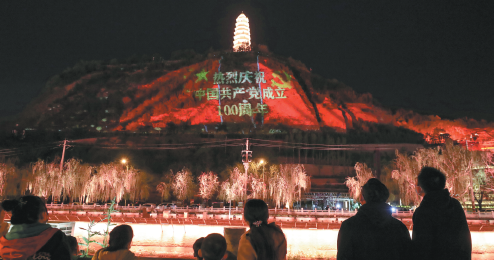

The Communist Party of China celebrates its 100th anniversary this year. The number of root-seeking visitors to Yan'an in northern Shaanxi province, where Chairman Mao Zedong and his comrades lived and worked, have greatly increased in the past months. Tourists across the country are eagerly searching for the original intentions and spirits of the communists on this red fertile soil, and they are constantly forging their ideals and beliefs, because good life needs to be accumulated and self-motivated, so that the people can set sail for the Chinese Dream.
In October 1935, the Central Red Army, which departed from Yudu, Jiangxi province, finally arrived at the Northern Shaanxi Revolutionary Base in Yan'an after untold hardships. From here, the Red Star illuminated China. In northern Shaanxi, the Party Central Committee held the Wayaobao Conference to determine the principles and policies of the national united front against Japanese aggression; the Chinese People's Red Army Vanguard Troop Against Japanese Aggression crossed the Yellow River and marched eastward; the people's armed forces led by the Communist Party of China became the mainstay in the War of Resistance Against Japan Aggression (1931-45).
Yan'an is the terminus of the Long March, the holy land of the Chinese revolution, and the symbol of the red spirit. The proletarian revolutionaries attained the goal of "ample food and clothing" on this loess plateau in the northwest by using their own hands. They fought hard against hostile forces at home and abroad, and finally won victory. Yan'an, poor and barren in the past, now hosts tall buildings and the naked soil is covered by green trees. However, the spirit of Yan'an has not faded in the slightest. Increasingly more people choose to come to this revolutionary holy city to relive the unforgettable years of the past.